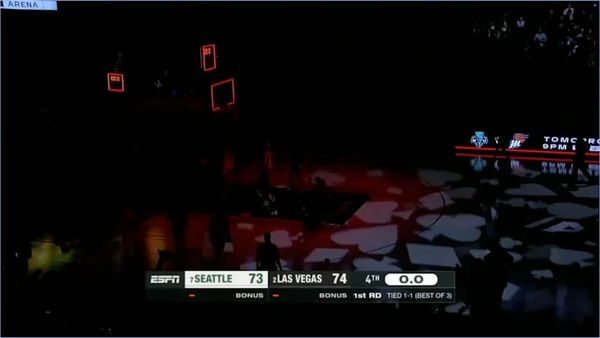
Dizziness can disrupt daily life and sometimes raise concerns about underlying health issues. It may feel like spinning, imbalance, or lightheadedness, and its causes span multiple systems in the body, from the inner ear and cardiovascular system to neurological and psychological conditions. While many cases are mild and resolve on their own, others may signal serious medical problems requiring attention.
Recognizing warning signs and knowing what treatments and self-care options are available can be empowering. Elisa C. Alvarado, M.D., notes how advances in diagnostics and medicine now offer more targeted relief, and lifestyle adjustments can further support recovery. With a proactive approach, many individuals are finding effective ways to manage their symptoms and return to normal activities.
Dizziness and Its Common Causes
Dizziness can feel like the room is spinning, your body is swaying, or your head is simply lightheaded. It's a broad term that covers sensations like vertigo, imbalance, or a floating feeling. While these symptoms may seem similar, they originate from different systems in the body.
Inner ear problems are among the most common causes. Conditions such as benign paroxysmal positional vertigo (BPPV) or vestibular neuritis can disrupt balance signals. On the other hand, issues related to blood pressure, heart rhythm, or even dehydration can lead to brief moments of lightheadedness.
Some people experience dizziness during migraines or after taking certain medications. In other cases, stress or anxiety may play a role, especially when dizziness occurs without a clear physical cause. Recognizing patterns can help narrow down the reason and determine the best direction for treatment. Persistent dizziness should not be ignored, particularly if it starts to affect daily tasks or mobility.
Signs That Require Medical Attention
Not every dizzy spell is harmless. If dizziness appears suddenly and is paired with symptoms like chest pain, blurred vision, slurred speech, or difficulty walking, it could signal something more serious. These signs may point to neurological or cardiovascular emergencies that should never be ignored. A sudden onset of dizziness with weakness on one side of the body might be a sign of a stroke.
An accurate diagnosis often begins with a detailed conversation between the patient and provider. A doctor may ask when symptoms began, how long they lasted, and what makes them better or worse. They might also conduct simple balance tests or use imaging to rule out serious conditions like stroke or inner ear tumors. Even subtle patterns in how and when it occurs can offer valuable clues. Blood tests, hearing exams, and heart monitoring are sometimes added to get a clearer picture.
Medical and Therapeutic Treatment Options
Treating dizziness depends largely on its causes. In some cases, medications like meclizine or diuretics help reduce symptoms tied to inner ear disorders or fluid imbalances. Others may find relief through vestibular rehabilitation, where customized exercises retrain the brain to interpret balance signals more accurately.
When anxiety or panic contributes to the sensation of dizziness, cognitive behavioral therapy (CBT) can be a helpful part of the treatment plan. Addressing both the physical and emotional components often leads to better long-term outcomes, especially when symptoms have persisted for months. In certain cases, combining medication with therapy can yield quicker relief.
Lifestyle Adjustments That Support Recovery
Staying hydrated, eating balanced meals, and getting enough sleep can stabilize the body's systems and reduce symptom flare-ups. When dizziness is triggered by sudden movements, slowing down transitions, like standing up from a chair, can make a noticeable difference.
Creating a safe home environment is also key. Placing grab bars in bathrooms, removing loose rugs, and improving lighting can lower the risk of falls during dizzy moments. Staying active is encouraged, but it's important to choose exercises that don't overwhelm the senses or provoke spinning sensations.
Advances in Diagnosis and Treatment
Modern tools are changing how dizziness is understood and treated. Devices like the video head impulse test allow clinicians to measure eye movements in response to head motion, revealing subtle vestibular issues that weren't easily detected in the past. These advances have made it easier to pinpoint the exact source of the imbalance.
Some clinics are now incorporating virtual reality into therapy. By simulating motion in a controlled setting, patients gradually build tolerance and retrain their balance systems. Research into neuromodulation—using gentle electrical currents to influence brain activity—is also showing promise for chronic cases that don't respond to conventional care. Personalized treatment plans based on diagnostic insights are increasingly becoming the norm, improving the likelihood of full recovery.
Self-Management and Long-Term Outlook
Living with dizziness can be frustrating, but tracking symptoms through a journal or app can uncover patterns over time. Noting what brings relief or seems to aggravate the sensation helps patients and providers make informed decisions. It also encourages active participation in recovery. Over time, this fosters a sense of control and helps reduce anxiety related to unpredictable symptoms.
Long-term success often involves ongoing communication with a healthcare team. Whether it's adjusting medications, updating a therapy plan, or addressing new triggers, staying engaged in one's care makes a real difference. With the right support and strategies in place, many people regain confidence in their balance and enjoy a full return to daily life. Setting realistic goals and celebrating small milestones can further enhance motivation during the recovery process.







